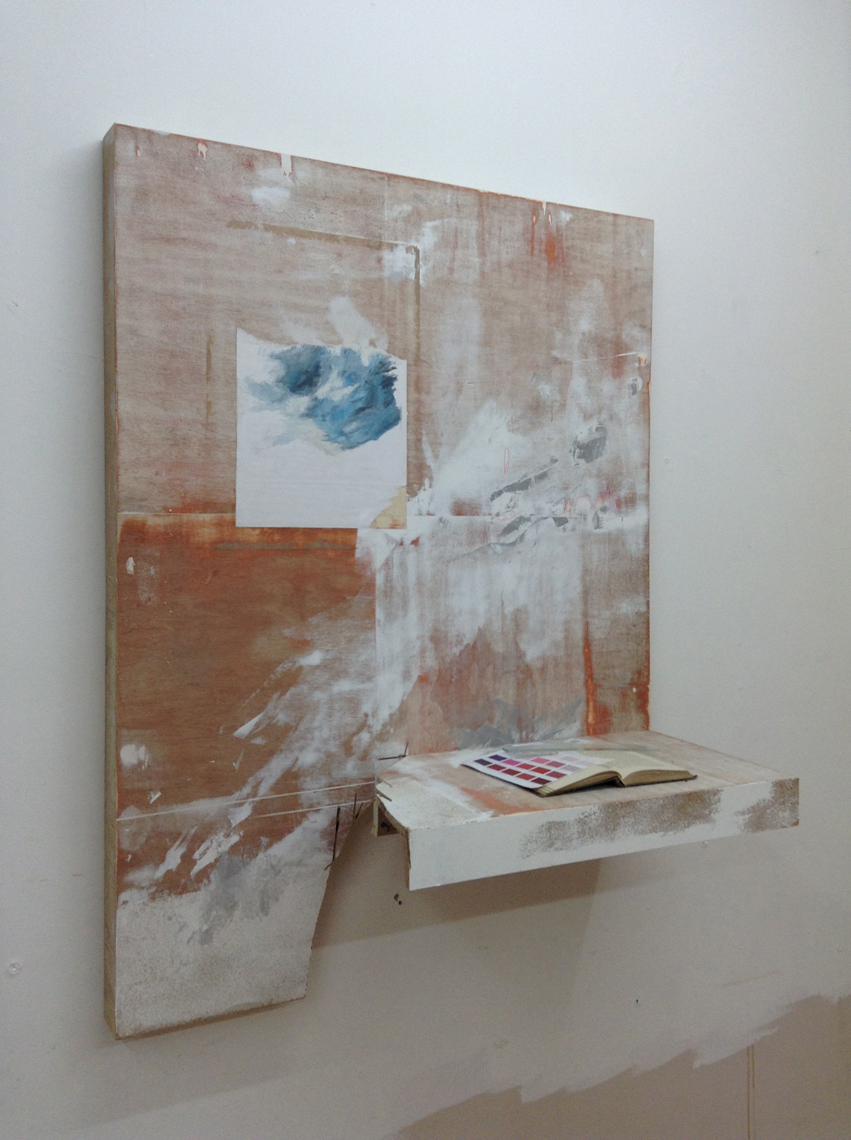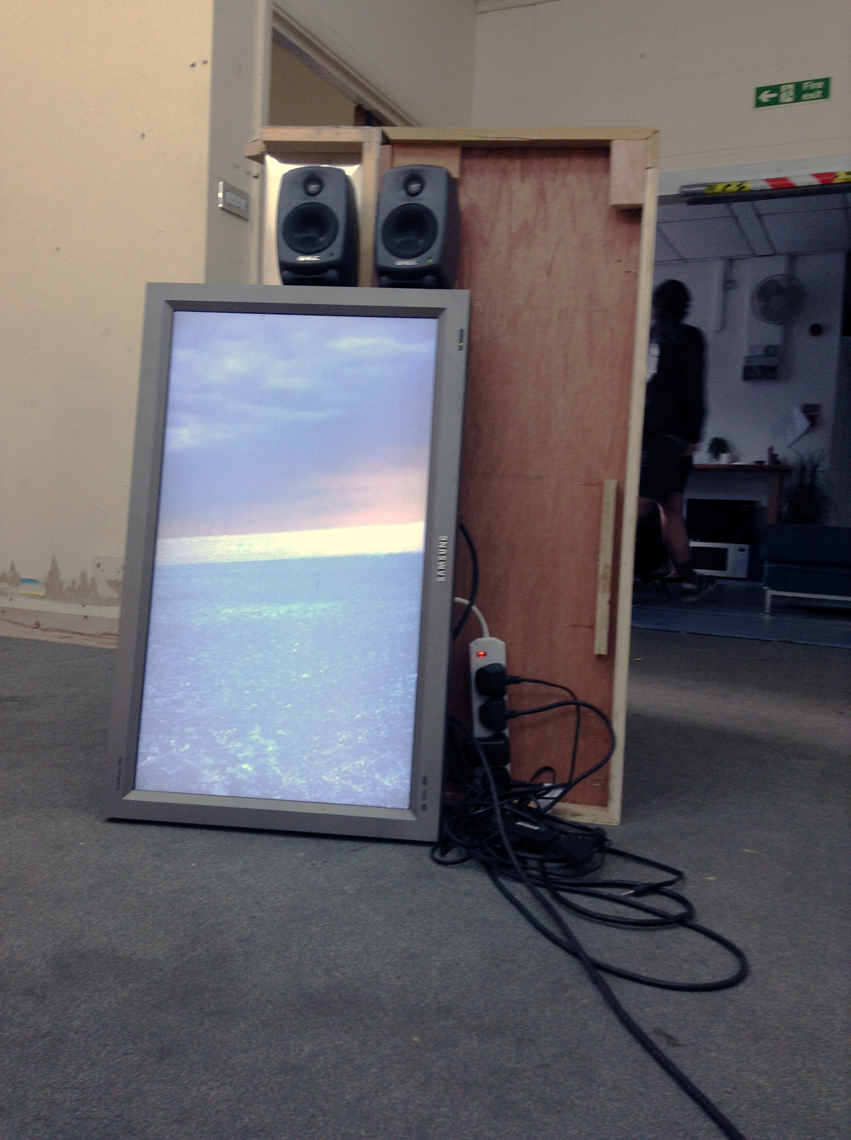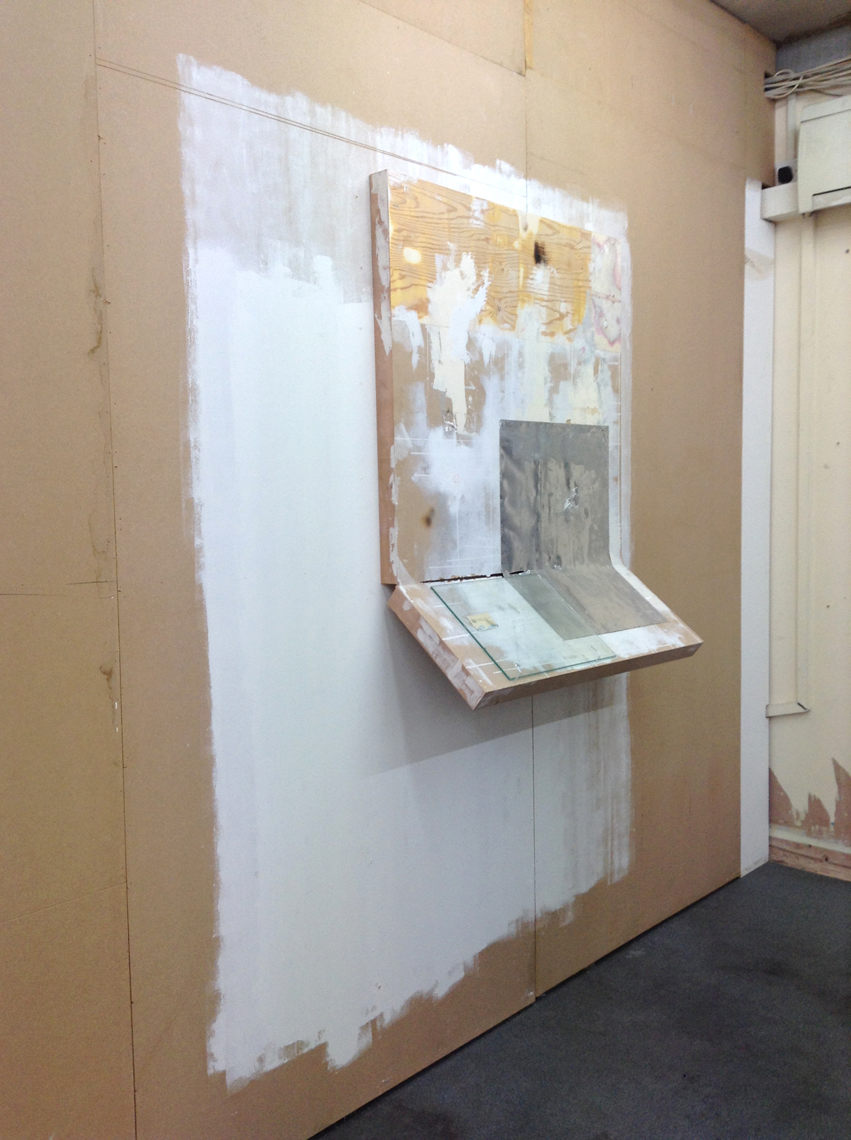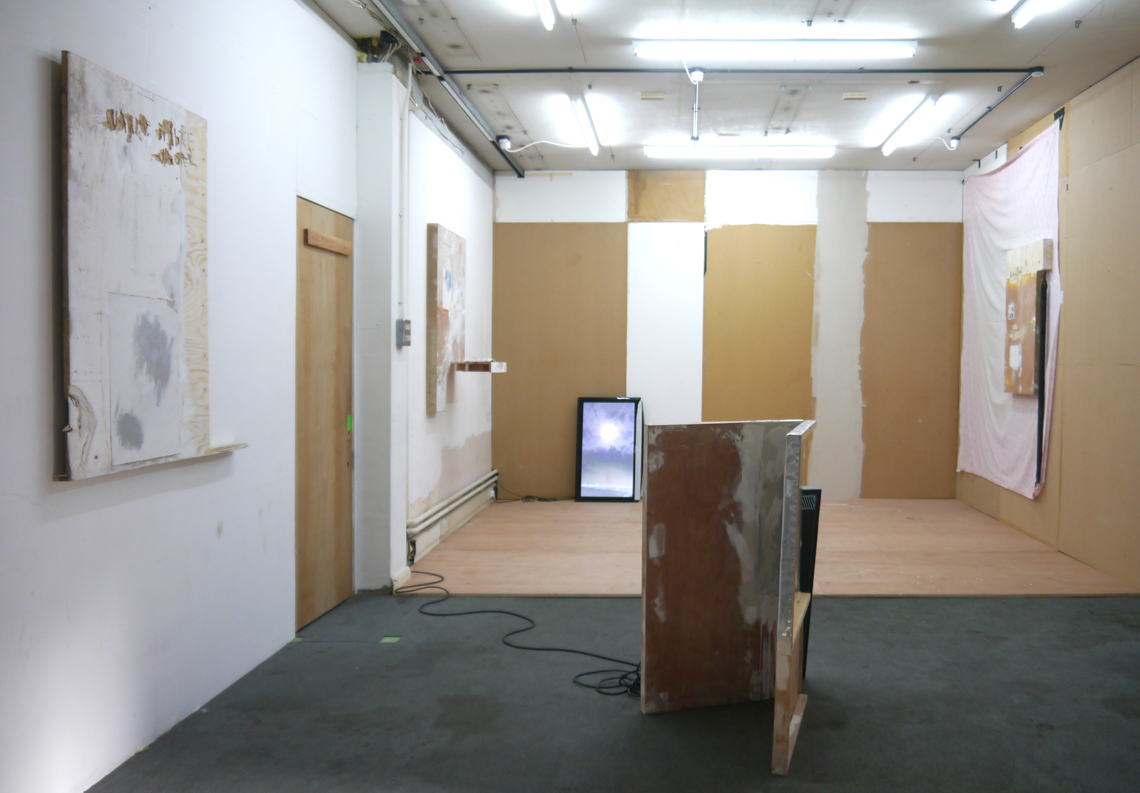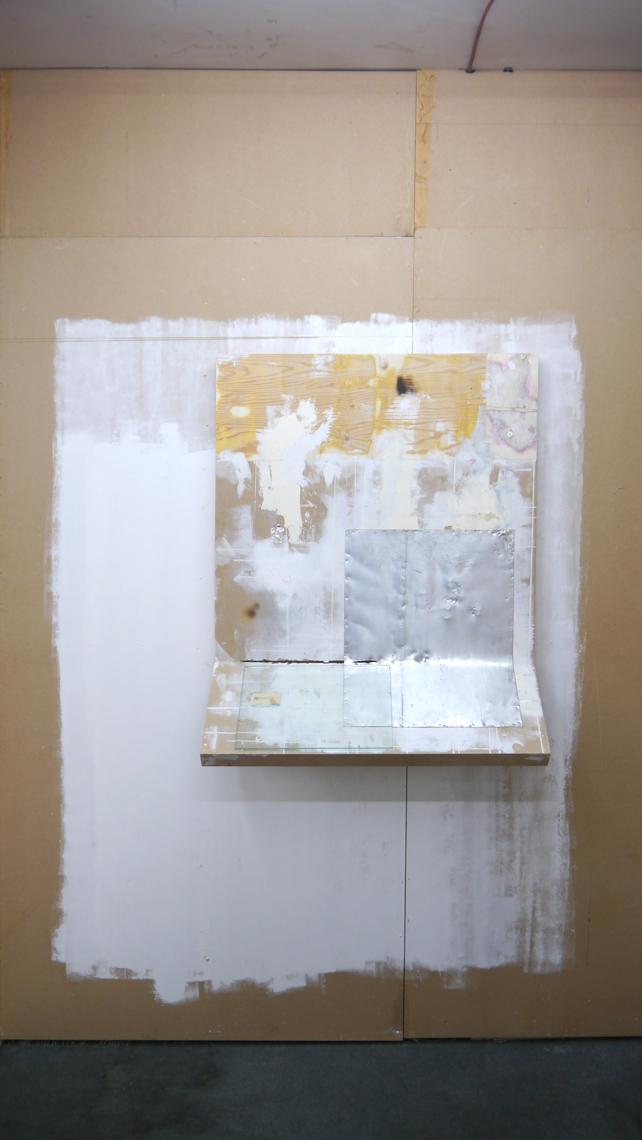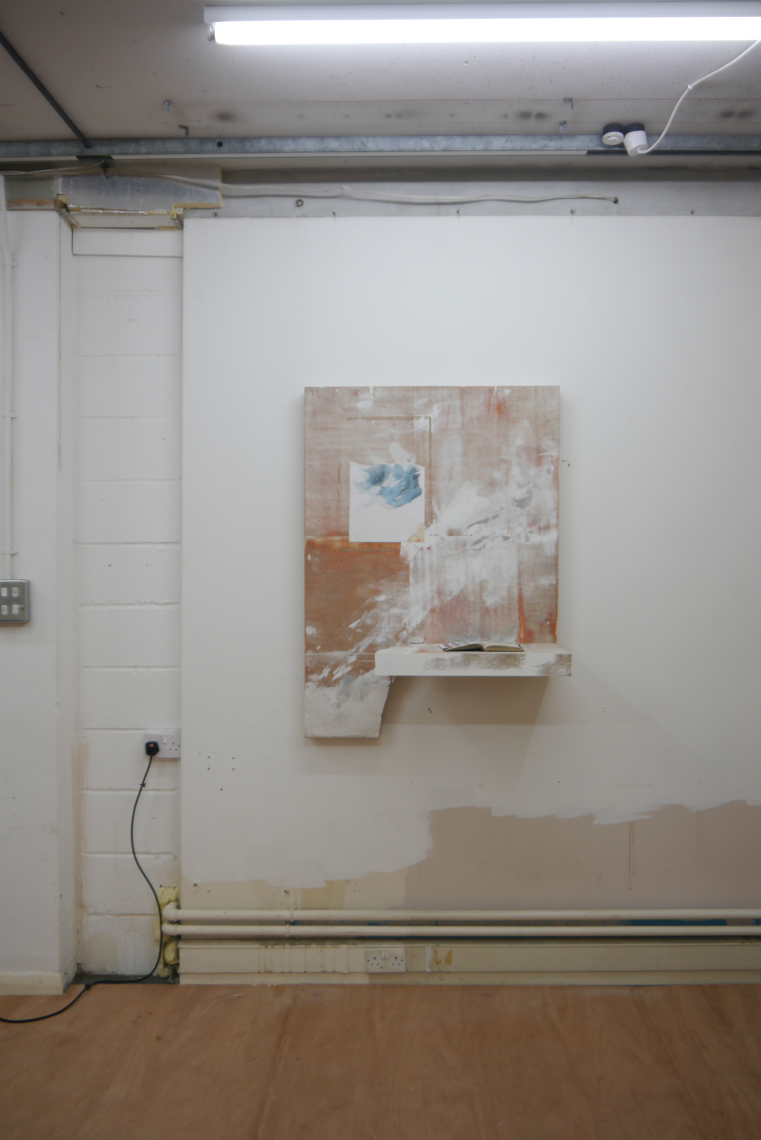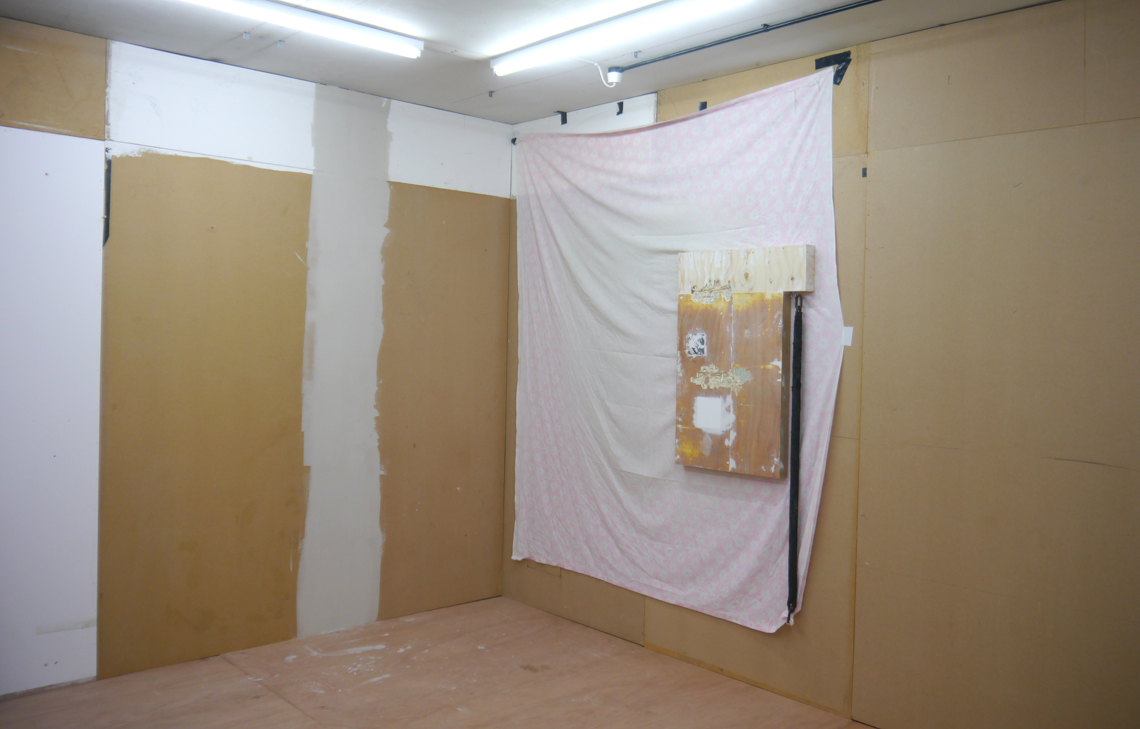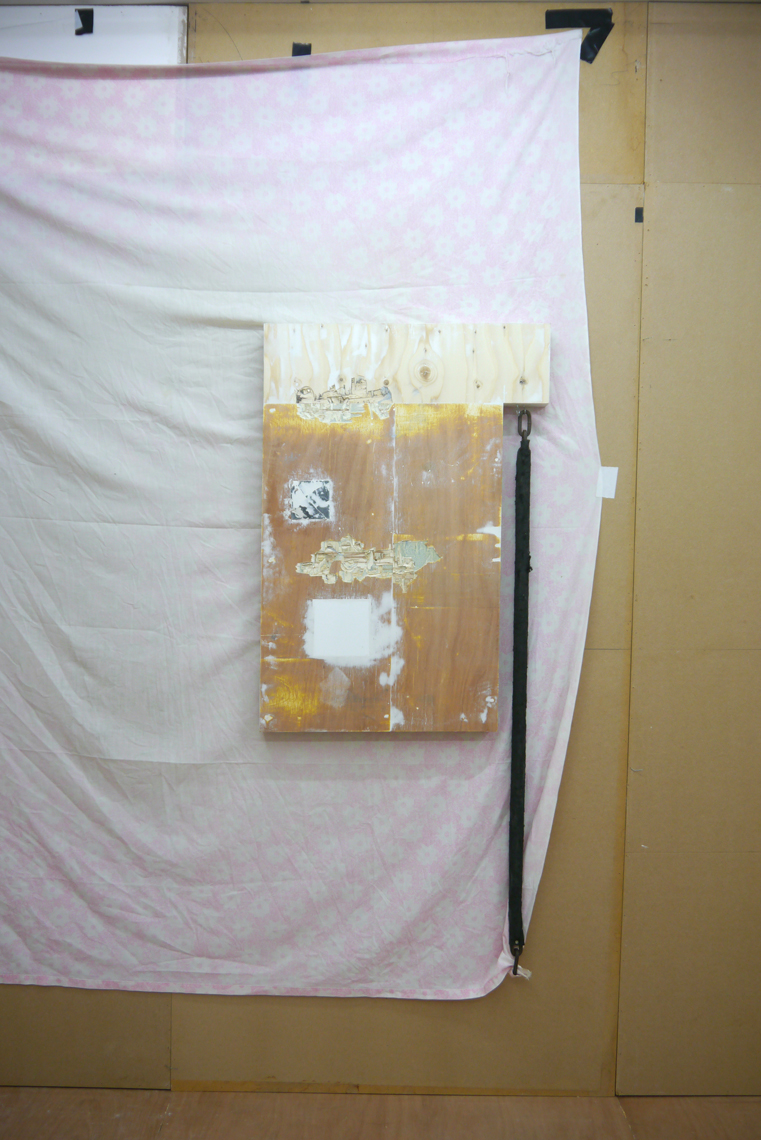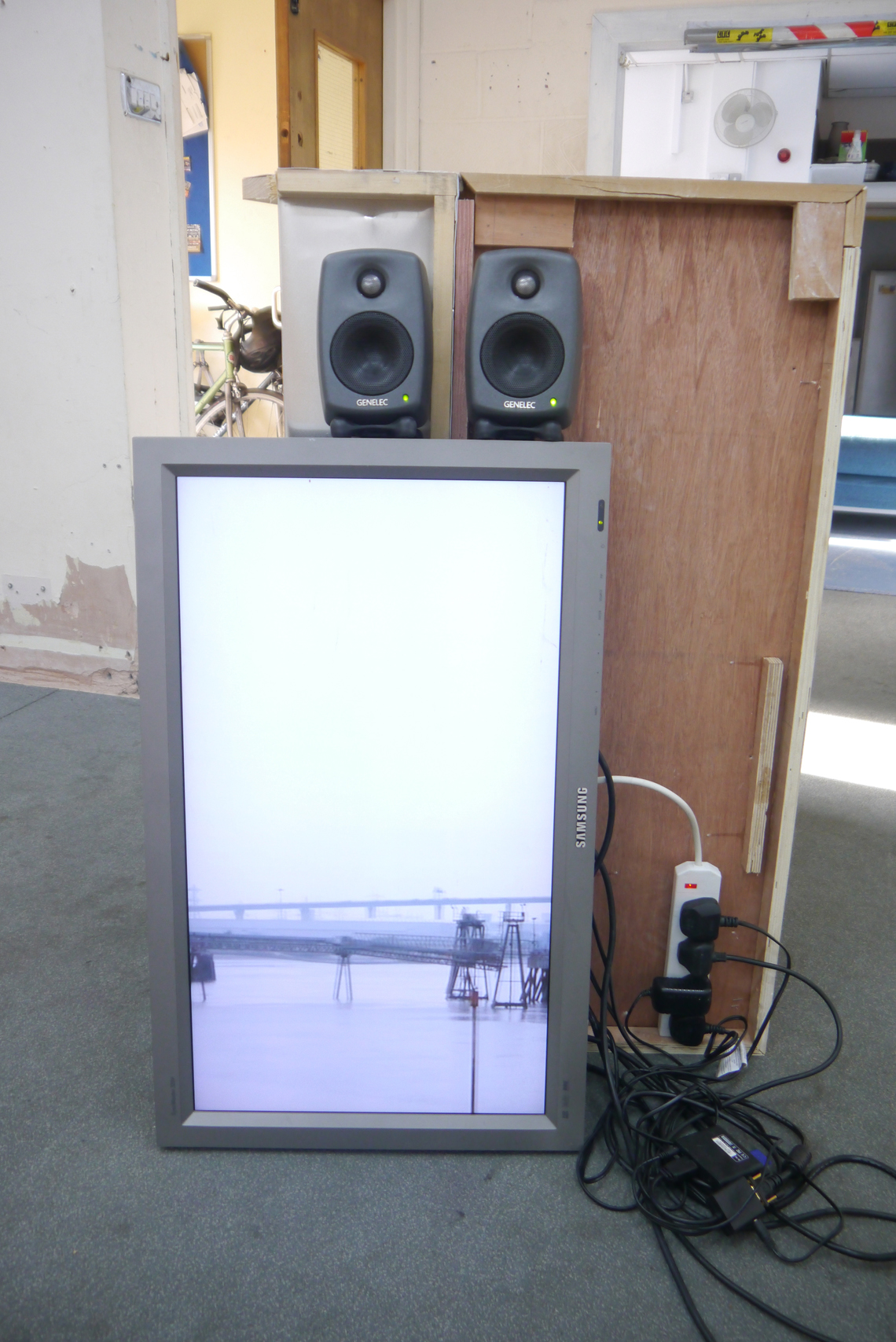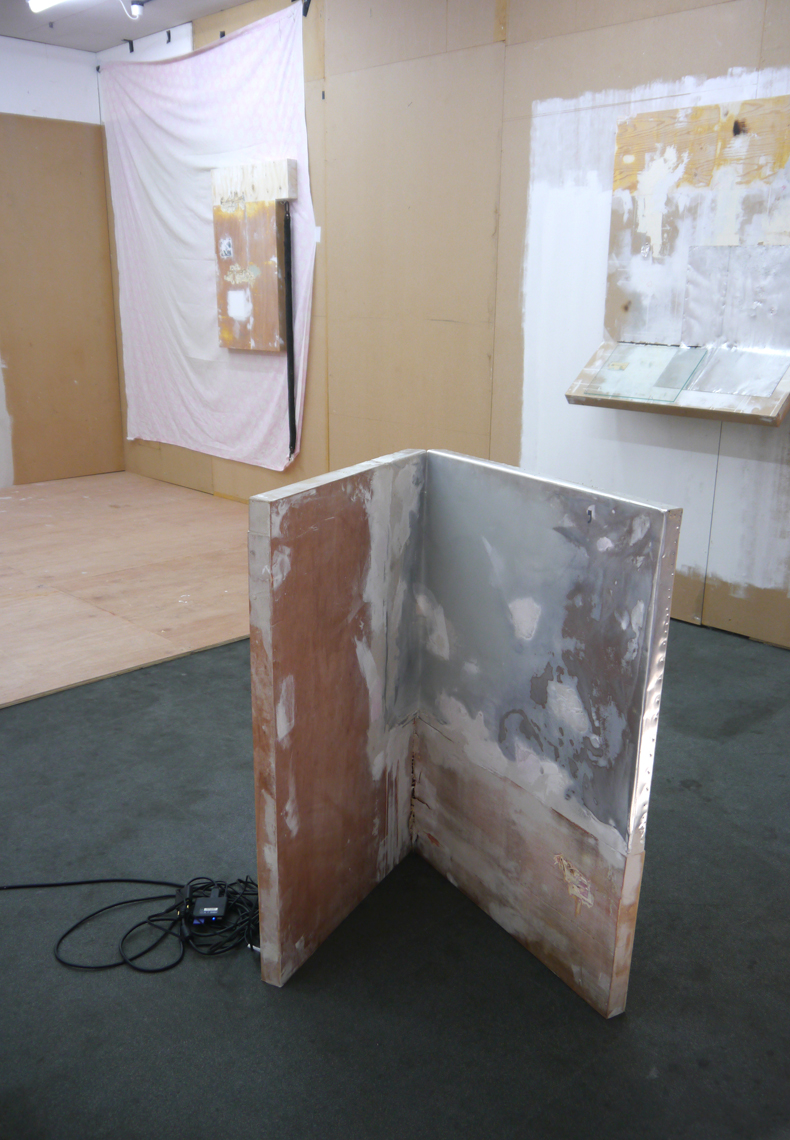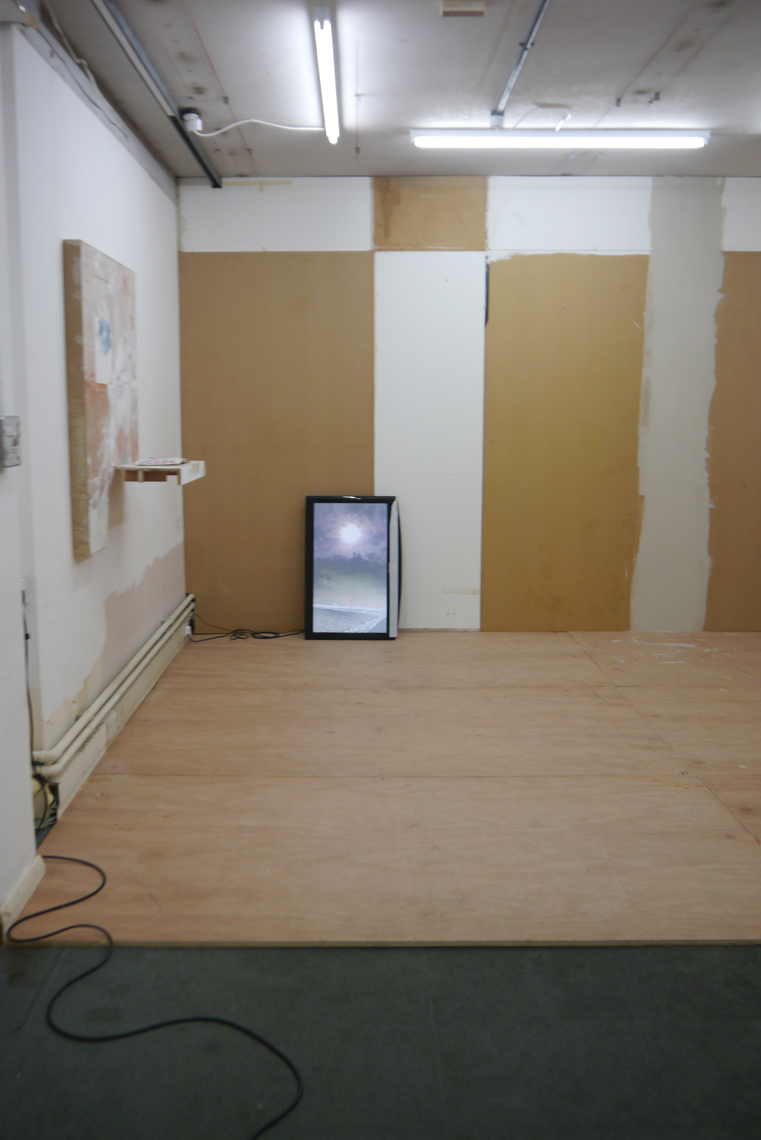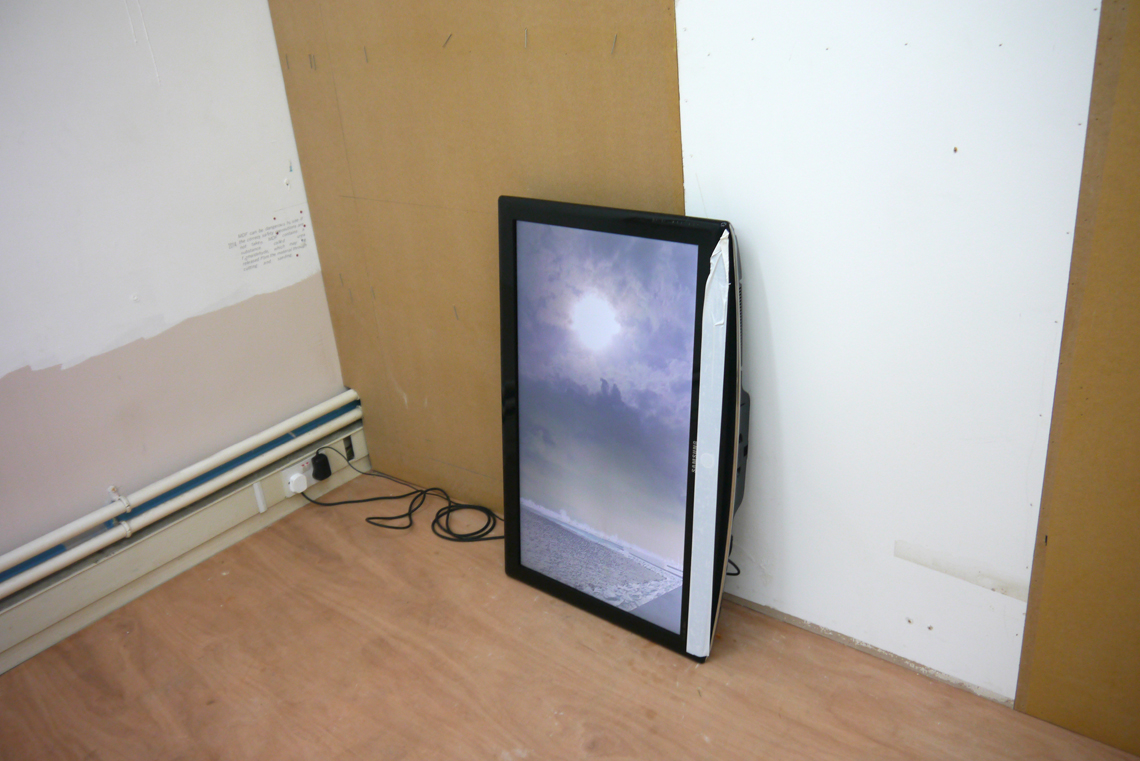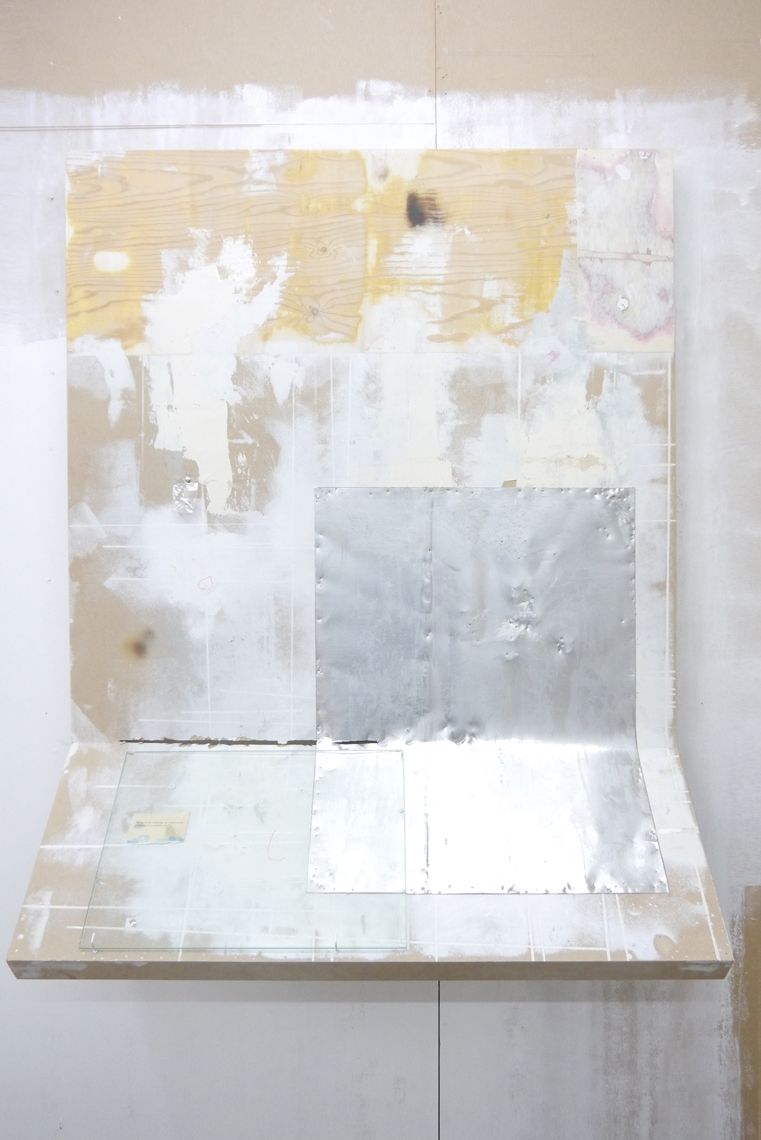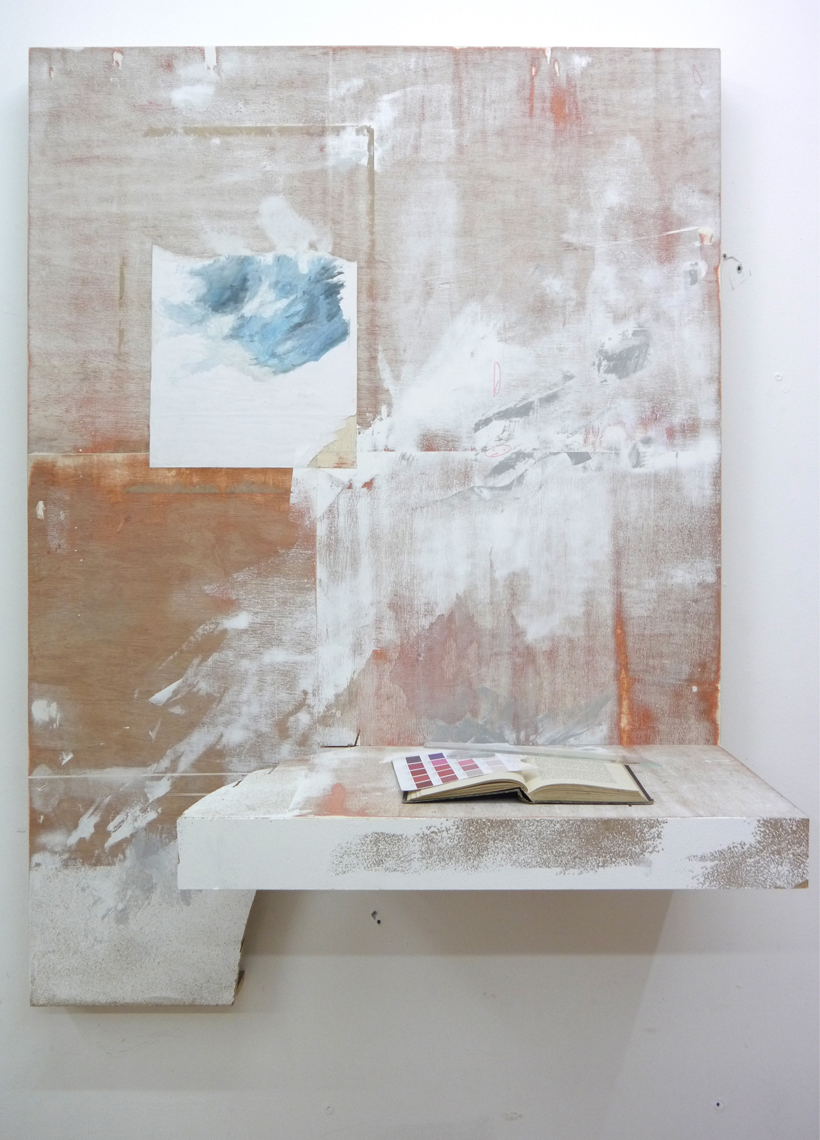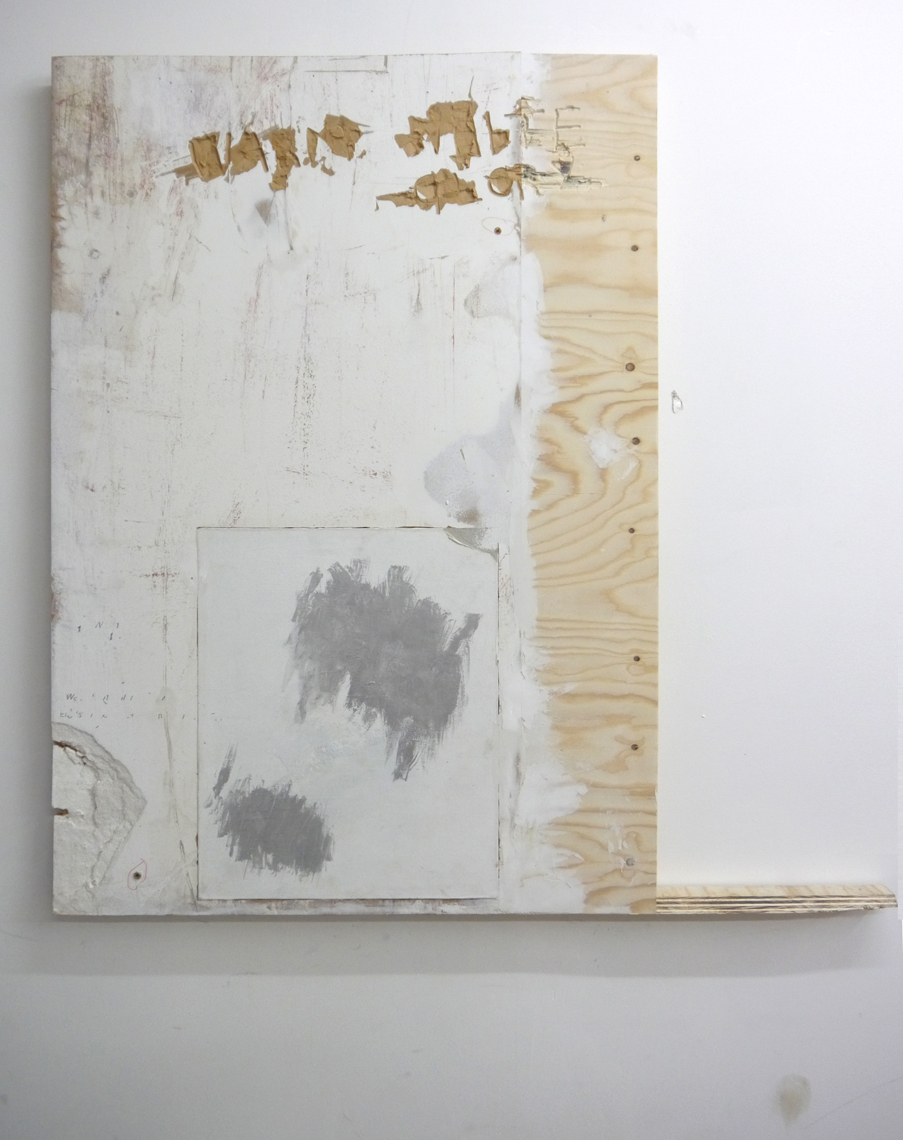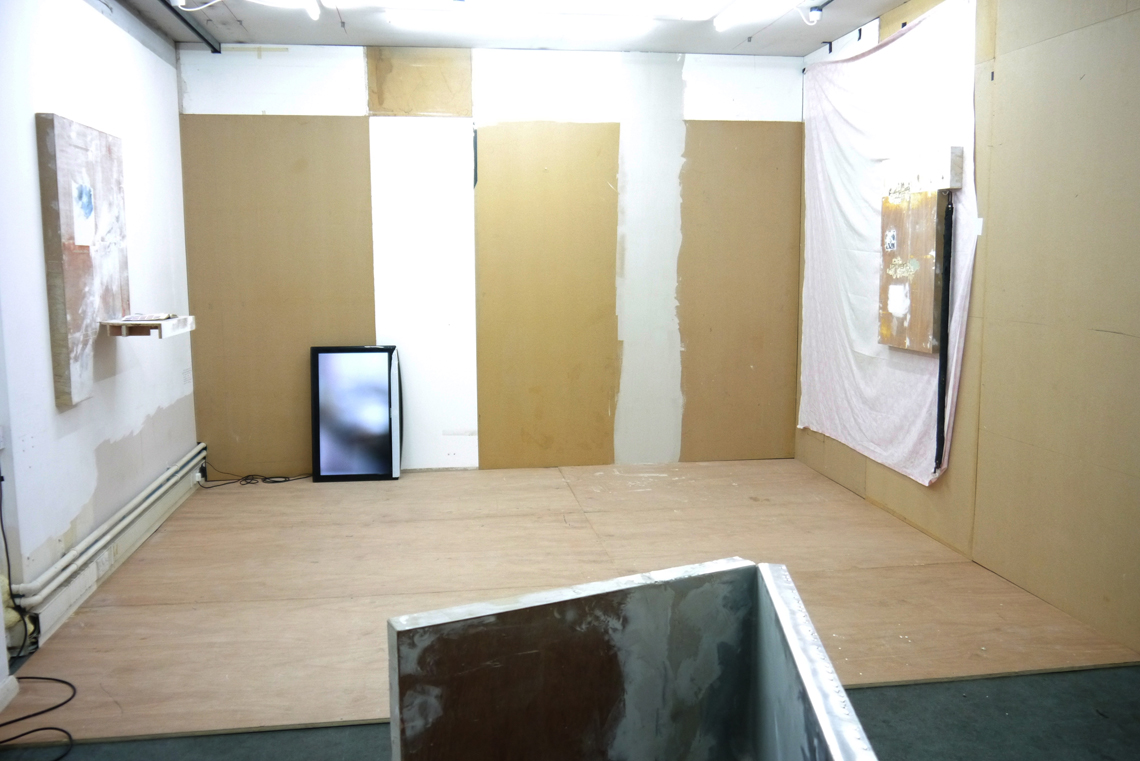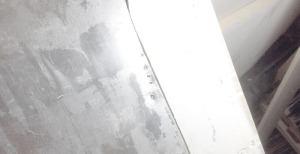WASH is the inaugural show at Happy Times, the gallery space in Milcote House, and the walls are still raw in places. A thick seam of plaster runs down the far wall to the floor and disparate panels of rescued wood and board form an impromptu collage on one side. This, it seems, all part of the installation; a series of composite or material collages, Takeshi Shiomitsu’s paintings throw the patchworked space into relief and lend the provisional build – perhaps itself a product of Happy Times curator Matt Welch’s aesthetic – a formalistic quality. Two screens stand on their ends on the floor (the portrait-aligned screen is fast becoming a Shiomitsu trademark) playing the same loop in rough sync. It’s an anxious supercut of close-ups and wide-shots; the former read as compulsive and the latter as alienated, like walking through a place you know you don’t belong. There is sound: a breath, a wave, a series of beeps like a heartrate monitor, the life signal: affirmative. The beeps are steady and then they’re not; one falls out, hush! And it all falls down for a second, uh. Like holding your breath, or a heart that skips a beat. When the ambient noise of a crowded bar comes through, it’s too loud, overwhelming; the accompanying footage a blur of lights and what might be bodies. Moving through – to silence. Beep. And the slow glow of an ocean.
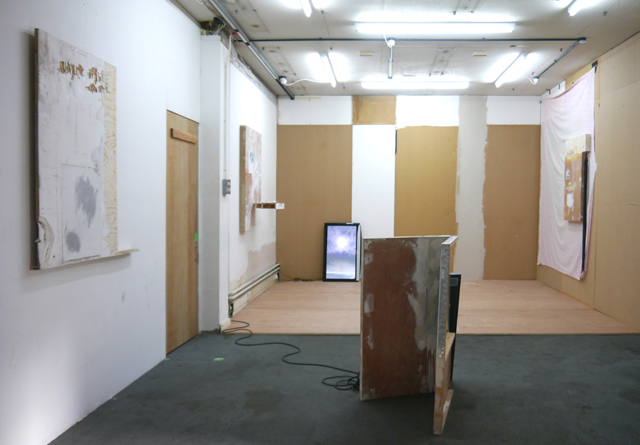
The paintings – wood and aluminum, plaster sanded down to a papery slick, canvas inset, a tile – hang around the space in their reticence, eloquently illegible. In two of these, the wood has been hacked into what may have once been a word, and then hacked away again. Despite the obsessive finishing elsewhere on the surface, this wound – an unmaking, an unsaying – glares out like an open mouth without a word in it. There are a lot of smart stylistic decisions here, cleverly subverting the various art-historical traditions of painting versus sculpture and all that shit, but this isn’t the best or most interesting thing about the work. Silence, or silencing, is the theme; wash refers to a cleansing process, but also to the processes of erasure and obfuscation implied (both historically and materially) by the notion of whitewash. Shiomitsu’s ‘Notes on Whiteness’ explores this idea of whiteness as a (false) neutral, enforced and naturalised by a cultural philosophy of what is pure, originary, unspoilt. To wash, then, is to remove something.
A long chain, hooked into a little eave in one of the purpose-built panels, runs down alongside; it’s attached at one end to the floral paisley sheet that functions as a backdrop, which is the single domestic (you could say feminised) object in a room full of hard edges and construction materials. The chain evokes the oppression of the familial, the weight of lives lived, and the whole center of the sheet has been worn pale and floral-less by the bodies that once slept there. Here, the whiteness – such as it is – is a cumulative result of time and washing, thousands of skin cells, the entropic compounds of sweat: the very opposite of unmarked.

Making and unmaking, marking and unmarking, saying and unsaying. The work functions on an ideological level, but also – as evidenced in the material dynamic of the paintings – as a reflection of those tiny little human processes connected with shame, and compulsion, and control. These, too, could be seen as the grander cultural narrative at work in the subject, where everything done is already at risk of overstepping some mark (very literally, as with the work of mark-making: the painter’s prerogative) and must be immediately undone, lest anybody see something, or read something in. It is beautiful, accomplished; ambitious and anxious, defiant and deferent at once. sorry, says the last line of the poem-cum-press release in parentheses: i didn’t mean to come across like that.**
Exhibition photos, top-right.
